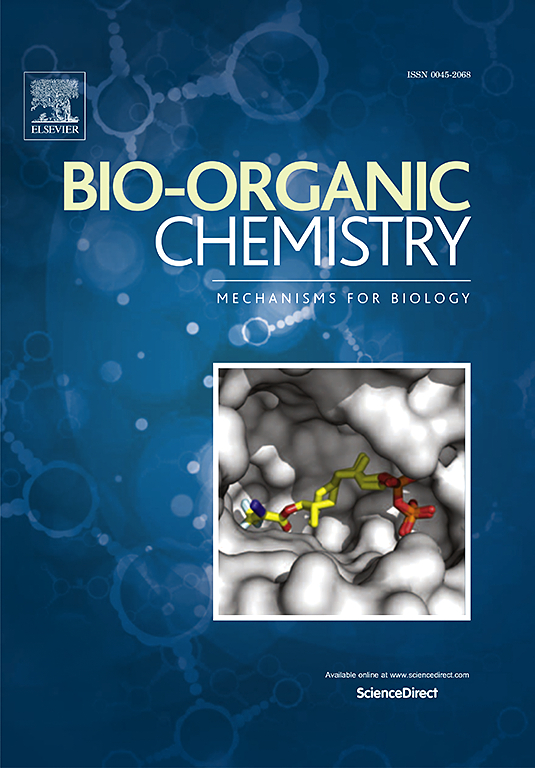Spermidine synthase promotes liver cancer progression in a paracrine manner by altering the macrophage immunometabolic state
IF 4.5
2区 医学
Q1 BIOCHEMISTRY & MOLECULAR BIOLOGY
引用次数: 0
Abstract
Purpose
Understanding the molecular mechanisms of adaptive regulation in the tumor microenvironment is crucial for precision therapy in hepatocellular carcinoma (HCC). We hypothesized that cargo proteins carried by extracellular vesicles (EVs) released in a hypoxic microenvironment might promote HCC progression by remodeling tumor-associated macrophages (TAMs).
Methods
EV protein analysis by label-free proteomics mass spectrometry of HCC cell lines of different tumor grades was performed. The promotional effect if spermidine synthase(SRM) on M2 polarized TAMs was further investigated using various biological approaches.
Results
SRM expression was positively correlated with liver cancer progression in HCC cell lines, liver cancer samples, and nude mouse models. In a mouse model, SRM expression was positively correlated with TAM infiltration and liver cancer progression. Pan-cancer dataset analysis confirmed that SRM overexpression in HCC tumors is correlated with poor patient prognosis. However, a hypoxic microenvironment is an internal driving factor for exosomal SRM that participates in microenvironmental modifications. Moreover, we defined a hitherto unknown pattern of microenvironmental crosstalk involving SRM in EVs, whereby macrophages complete the phenotypic fate of M2 tumor-associated macrophages through SRM uptake.
Conclusion
SRM regulation within the immune microenvironment is metabolically driven. By upregulating spermidine, which serves as a substrate for eIF5A hypusination, excessive oxidative phosphorylation (OXPHOS) assembly is achieved. This, in turn, leads to the expression of immunosuppressive marker molecules and ultimately promotes liver cancer progression. SRM, which is enriched in the EVs of HCC cells under hypoxic conditions, acts as a potent regulator linking polyamine and energy metabolism in TAMs, thereby promoting liver cancer progression.

亚精胺合成酶通过改变巨噬细胞的免疫代谢状态,以旁分泌方式促进肝癌的进展。
目的:了解肿瘤微环境适应性调控的分子机制对肝细胞癌(HCC)的精准治疗至关重要。我们假设在缺氧微环境中释放的细胞外囊泡(ev)携带的货物蛋白可能通过重塑肿瘤相关巨噬细胞(tam)来促进HCC的进展。方法:采用无标记蛋白质组学质谱法对不同肿瘤级别HCC细胞系进行EV蛋白分析。采用多种生物学方法进一步研究了亚精胺合成酶(SRM)对M2极化tam的促进作用。结果:在HCC细胞系、肝癌样本和裸鼠模型中,SRM表达与肝癌进展呈正相关。在小鼠模型中,SRM表达与TAM浸润和肝癌进展呈正相关。泛癌数据集分析证实,SRM在HCC肿瘤中的过表达与患者预后不良相关。然而,低氧微环境是外泌体SRM参与微环境修饰的内部驱动因素。此外,我们定义了一种迄今为止未知的涉及SRM的ev微环境串扰模式,其中巨噬细胞通过SRM摄取完成M2肿瘤相关巨噬细胞的表型命运。结论:免疫微环境中的SRM调控是由代谢驱动的。通过上调亚精胺(作为eIF5A的底物),可以实现过度的氧化磷酸化(OXPHOS)组装。这反过来又导致免疫抑制标记分子的表达,并最终促进肝癌的进展。SRM在缺氧条件下富集于HCC细胞的ev中,是tam中多胺和能量代谢的有效调节因子,从而促进肝癌的进展。
本文章由计算机程序翻译,如有差异,请以英文原文为准。
求助全文
约1分钟内获得全文
求助全文
来源期刊

Bioorganic Chemistry
生物-生化与分子生物学
CiteScore
9.70
自引率
3.90%
发文量
679
审稿时长
31 days
期刊介绍:
Bioorganic Chemistry publishes research that addresses biological questions at the molecular level, using organic chemistry and principles of physical organic chemistry. The scope of the journal covers a range of topics at the organic chemistry-biology interface, including: enzyme catalysis, biotransformation and enzyme inhibition; nucleic acids chemistry; medicinal chemistry; natural product chemistry, natural product synthesis and natural product biosynthesis; antimicrobial agents; lipid and peptide chemistry; biophysical chemistry; biological probes; bio-orthogonal chemistry and biomimetic chemistry.
For manuscripts dealing with synthetic bioactive compounds, the Journal requires that the molecular target of the compounds described must be known, and must be demonstrated experimentally in the manuscript. For studies involving natural products, if the molecular target is unknown, some data beyond simple cell-based toxicity studies to provide insight into the mechanism of action is required. Studies supported by molecular docking are welcome, but must be supported by experimental data. The Journal does not consider manuscripts that are purely theoretical or computational in nature.
The Journal publishes regular articles, short communications and reviews. Reviews are normally invited by Editors or Editorial Board members. Authors of unsolicited reviews should first contact an Editor or Editorial Board member to determine whether the proposed article is within the scope of the Journal.
 求助内容:
求助内容: 应助结果提醒方式:
应助结果提醒方式:


